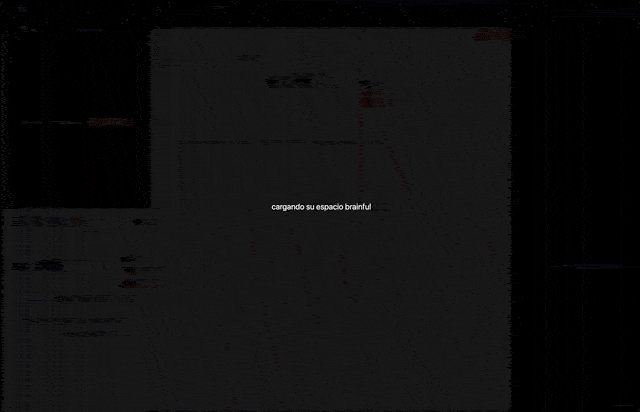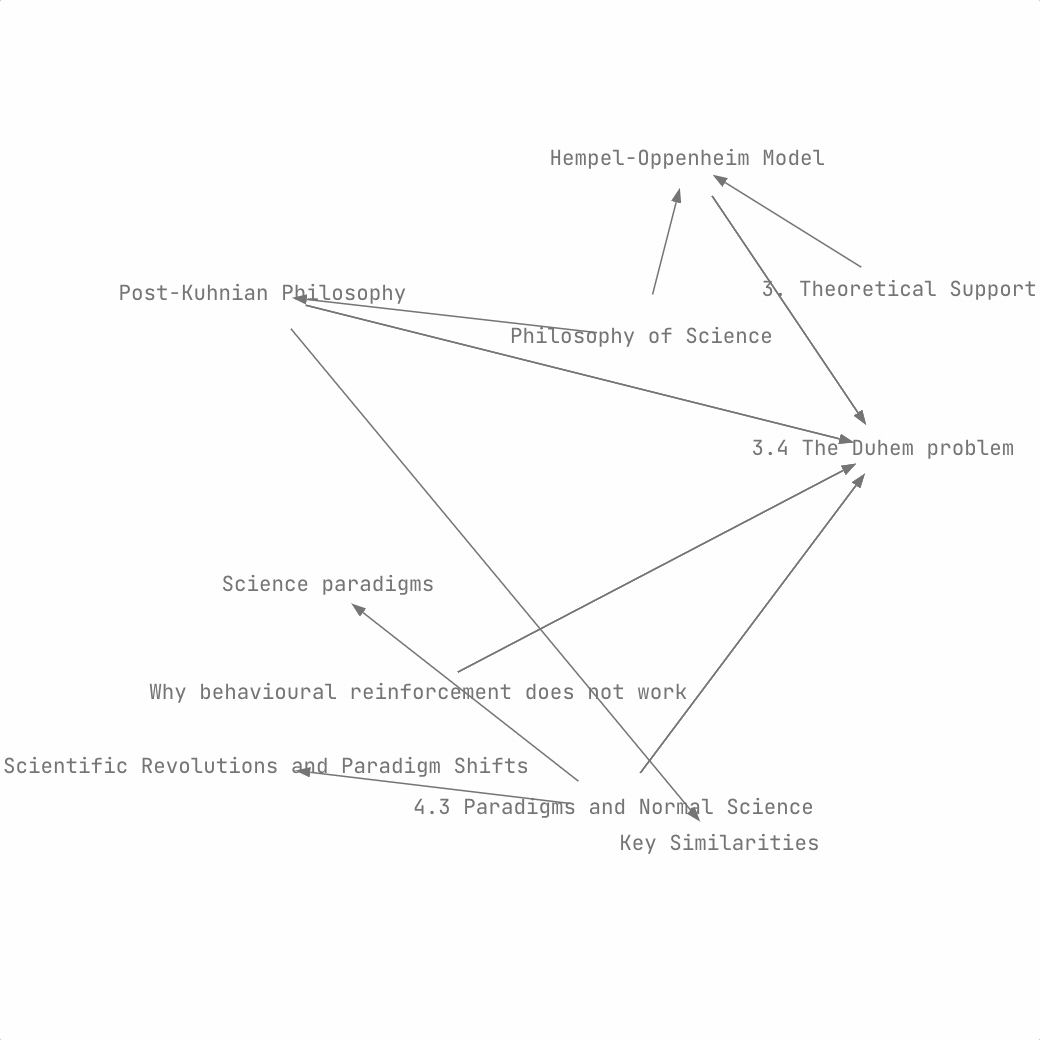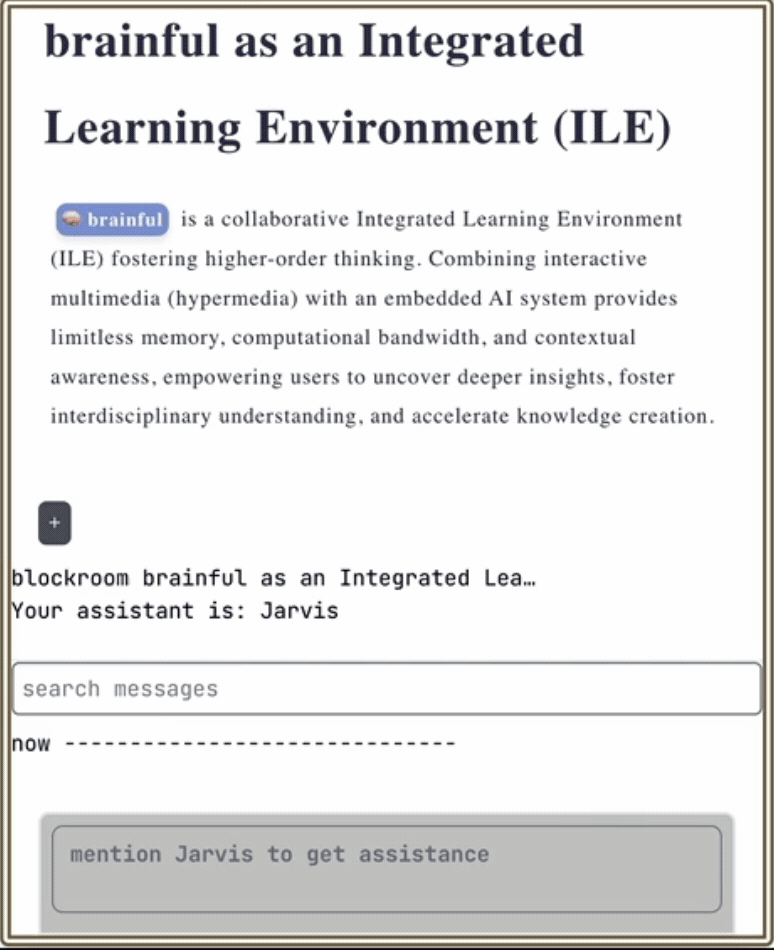think more. think again. think beyond. think unthinkable.
Capture all. Connect unseen. Create meaning. Contribute value.
brainful is a deeply opinionated social thought processor for people who think. Built on philosophical foundations. Designed for extreme idea throughput, real-time collaboration, and AI-powered atomic research.

captured
connected
created
contributed
we offer four elemental components that transform how you capture, connect, and compound knowledge
The atomic units of thought. Blocks are proprietary abstract data types that encapsulate discrete units of knowledge through linguistic expressions. They serve as living repositories of information, continuously evolving with your understanding.
// Example Block
"The future is already here — it's just not evenly distributed." — William Gibson
The verified sources of truth. BlockReferences are immutable constructs that transcend linguistic representation, embodying visual and sensory elements that form the bedrock of verified knowledge.
// Example BlockReference
The semantic web of knowledge. Entities create meaningful connections between blocks and references, forming intuitive knowledge clusters that mirror how your mind naturally organizes information.
// Example Entity Network
The creative universes of thought. BlockSpaces are dynamic workspaces where knowledge creation and organization flow naturally, providing dedicated environments for different contexts of your intellectual life.
// Example BlockSpaces
With translations across over 25 languages, we got you covered. With our AI ready to assist you every step of the way.
Not an afterthought. Not a feature. A fundamental principle.
Because the next breakthrough might be pondering in Mandarin, dreaming in Swahili, or reasoning in French.
your ideas deserve to be heard in the language you dream in — we listen, we translate, we care
Reaching 4+ billion minds worldwide
Because knowledge belongs to everyone, in every language.
Make knowledge capture as seamless as possible by widening access through API, mobile, and web platforms. Speed is a priority.
Experience the perfect synthesis of power and elegance. Our WYSIWYG editor seamlessly blends markdown flexibility with instantaneous visual feedback.
// Editor Preview
Capture brilliance seamlessly across all your devices. Our iOS app synchronises perfectly with the web client.
Optimised for mobile excellence with an intuitive interface that adapts seamlessly to your workflow.

Make finding hidden connections, discovering meaning and parallels between ideas, and effectively storing and visualizing them frictionless, leveraging brainful AI.
Connect and structure information using six distinct relationship types that mirror human thought patterns.
Symmetrical relationships where blocks reciprocally reference each other.
Block ↔ BlockParent-child structure enabling nested organization of information.
Block ⊢ BlockUnidirectional links connecting blocks to references or citations.
Block → BlockReferenceSemantic connections between blocks and conceptual entities.
Block ⊣ EntityTagging blocks with entities to declare contextual relevance.
BlockReference ⊣ EntityAggregates blocks or references into specific blockspaces.
Block | BlockReference ∈ Blockspace
Your multidirectional relationship model allows you and Brainful AI to create and traverse your networked knowledge graph. This helps formulate connections between seemingly disparate ideas and enables AI to explore new extensions of your existing knowledge.
Transform collected knowledge into original brilliance with AI-powered creation tools
The core of our thesis at brainpolo is that the future of digital identity lives on the web. With the prominence of AI-generated content and the rise of web scraping, digital sovereignty is not a nice-to-have—it's a necessity.
We recognise the web as both a sacred platform for the preservation of human thought and a medium for sharing ideas in a safe, secure manner. We're making creation bulletproof through hardcore versioning tied to Bitcoin, advanced data loss prevention, and our proprietary brainful-flavored HTML (BHTML) that ensures your thoughts remain yours—forever.
Every creation timestamped and verified on Bitcoin's immutable ledger
Your thoughts remain yours with cryptographic proof of authorship
Hardcore version control that captures every evolution of thought
Make content distribution as seamless and effortless as possible for anyone with zero setup with 1-click block deployment. Anyone can build a creator profile and gain visibility on their ideas exclusively based on merit rather than vanity metrics.
Share your brilliance with the world through your exclusive subdomain. Control precisely who sees your content with intuitive access controls and seamless one-click sharing.
Brainful Intelligence
Experience AI that thinks alongside you
Brainful Intelligence anticipates connections, evolves ideas across dimensions, and transforms thoughts into structured knowledge—all while learning your unique cognitive patterns.
Tab your way to completion
Just press Tab and watch your ideas unfold. Our AI doesn't just predict words—it anticipates entire conceptual trajectories, understanding the full context and direction of your thoughts.
The future of human-AI collaboration lies not in replacement, but in symbiotic enhancement where artificial intelligence amplifies human creativity, intuition, and decision-making capabilities[tab]
Achieve effortless perfection with 1-click enhancement
Transform your content across multiple dimensions simultaneously. Our AI analyzes structure, style, and deeper insights—presenting unified enhancements that elevate your writing.
Machine learning models process vast amounts of data to identify patterns. These patterns help make predictions about future outcomes. However, the complexity of these models can make them difficult to interpret.
We don't just build software, but also the deterministic and agentic systems to powerful brainful AI, a state of the art model that outperforms every single model in our benchmarks. We also offer this as a standalone chat and API service for users who wish to use our AI separately. More information can be found at brainful.ai.
Our AI doesn't just respond based on input—it fully understands the context of your conversation. It dynamically assesses context in relation to your identity, goals, data, and environment. With real-time internet access, it provides consistent, high-quality, and relevant responses.

Brainful is not just a powerful rich text editor, but also a full-blown file system, with all core sharing and publication functionality, and support for teams and organizations. Every single block (or collections of blocks) in your space or team space is 1 click away from being accessible to the world.
We process your data off-the-wire.
Your individuality is your biggest asset. Just because we built for collaboration doesn't mean we skimped on security. We work hard to isolate your knowledge space from prying eyes. Every share is intentional, deliberate, yours to control.
No public endpoints. No exposed surfaces. No shortcuts. Every security dial turned to maximum—private networks, proxy authentication, triple encryption. State-of-the-art security on state-of-the-art hardware.
Your thoughts flow through infrastructure the internet cannot touch. Not because it's easy, but because it's right.
We invite you to a calmer space, one for your eyes only.
Zero public endpoints. Every connection authenticated. Every pathway monitored. We don't just defend against attacks—our architecture makes them irrelevant.
Banking-grade authentication. Government-level standards. NIST AAL3 compliance—the same protocols that protect national infrastructure.
Your data lives in isolation. Air-gapped storage. Private-only access. Triple-encrypted at rest, in transit, and in memory.
Our users outperform. Join thinkers from leading institutions like St Andrews and the Russell Group we serve millions of monthly requests for.
